Champagne has long been associated with luxurious living.
Most people use the term Champagne to describe any type of sparkling wine; however, true Champagne is wine that comes from the Champagne wine region in France. When people refer to Champagne that wasn’t made in that region, they are generally talking about a wine that was made using the Méthode Champenoise, which is the traditional method of fermentation used in Champagne making.
The very presentation of a champagne bottle implies prestige, excellence and a cause for celebration.
Moët & Chandon is the worlds’s largest producers of Champagne, producing over 26,000,000 bottles per year. This prestigious brand of Champagne is made to a high standard of excellence. In their line of champagnes is the Moët & Chandon Imperial, Rose Imperial, Nectar Imperial and Grand Vintage.
Nectar Imperial is the boldest and most unexpected Moet & Chandon champagne. It reflects the diversity and complementarities of the three champagne grapes and the richness of the region’s best vineyards to reveal the magic of the world’s most loved champagne.
Nectar Imperial has excellent mix of Pinot Noir, Pinot Meunier and Chardonnay. Its yellow colour is sustained and nuanced with gold.Very fruity with roses and white berries, redcurrants, melon and clementine, opening up it takes on the taste of poached pears, bursting with flavor, full and rich.
Ideal for all dishes.
How to serve?
Serve champagne cool but not iced. Ideal temperature is 6 – 8°C. Avoid storing in fridge for a long time as this would “kill” the wine.
The best way to chill champagne is by placing the bottle in an Ice Bucket filled with ice and water for 30 to 40 minutes.
Champagne should be served in long-stemmed flutes or tulip shaped glasses. These are designed to enhance the flow of bubbles to the crown and allow the full aroma to concentrate near the surface.
If serving champagne with food, especially a vintage or prestige cuvee, the temperature should be closer to 10°C. Tiny bubbles will rise in a continuous stream.
When serving, pour a small quantity of wine into each glass and allow it to settle. Then fill each glass two-thirds full.
There are many different types of champagne that vary wildly in taste and, of course, price. The most widely available is non-vintage (NV) champagne which accounts for as much as 90% of all champagnes produced. The list below outlines the different types of champagne.
Non-vintage Champagne
Champagne that is blended from a variety of up to 40 different wines from many different years. Champagne producers will keep back 20% of their harvest each year to use in future blends.
Vintage Champagne
Vintage champagne is created from grapes belonging to a particular year. Not all years are deemed ‘Vintage’ and the decision is made by individual Houses.
Rose Champagne
Rose or ‘Pink’ champagne can be created by one of two methods.
1. By adding a small amount of Pinot Noir red wine to the champagne
2. By pressing the grapes slower than normal to allow the skin time to colour the wine Rose champagne is often revered as a ‘romantic’ champagne based on its colouration.
Prestige (Luxury) Cuvée
A Prestige Cuvée is a Vintage champagne but not only are the grapes from a specific year, but also from the very best vineyards. Although all grapes that make champagne are hand-picked, these really are the pick of the bunch!
Demi-sec Champagne
Countless champagne blends have been created to cater for all tastes. Demi-Sec (translation: semi-dry) is a medium dry / medium sweet champagne.
Recently Disgorged
Recently disgorged champagne is champagne that is disgorged just before being sold. For many this means that the champagne maintains its freshness and benefits from the additional maturation in the bottle.
Blanc de Blancs Champagne
Champagne is usually made using 3 grapes – Chardonnay, Pinot Noir and Pinot Meunier. Blanc de Blancs champagne used only white Chardonnay grapes.
Blanc de Noirs Champagne
Blanc de Noirs wines are made only from the Pinot Noir and/or Pinot Meunier red grapes and consequently have a slight salmon or pink tint.
The sweetness of the bottled wine:
Extra Brut
Brut
Extra Dry
Sec
Demi-sec
Doux
Popular champagne brands:
Armand De Brignac
Ayala
Besserat
Bollinger
Canard-Duchêne
Cattier
Charles Ellner
Charles Lafitte
Charles Heidsieck
Dom Pérignon
Duval Leroy
Gosset
Henri Giraud
Henriot
Krug
Lanson
Laurent Perrier
Louis Roederer
Mercier
Moet & Chandon
Mumm
Nicolas Feuillatte
Perrier Jouet
Piper Heidsieck
Pol Roger
Pommery
Ruinart
Taittinger
Thienot
Tsarine
Veuve Clicquot
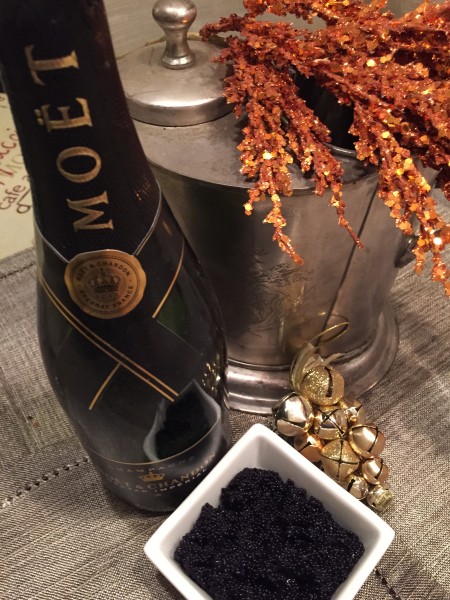
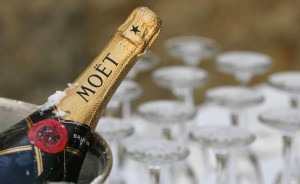
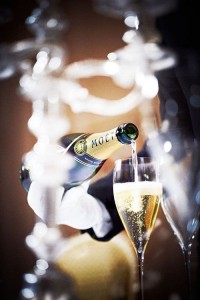
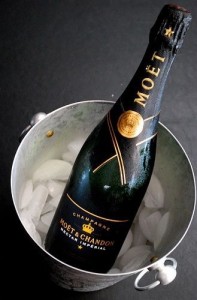
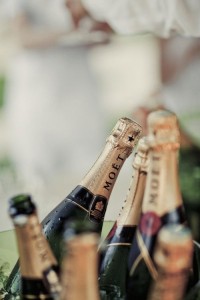
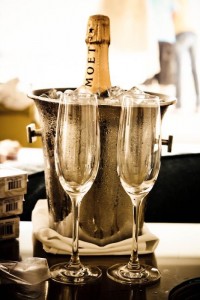
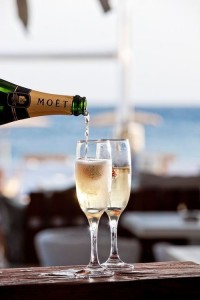
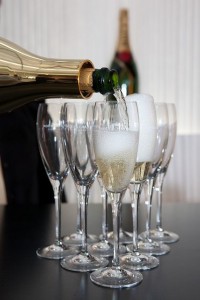



[…] Have a look at my last post about champagnes here. […]